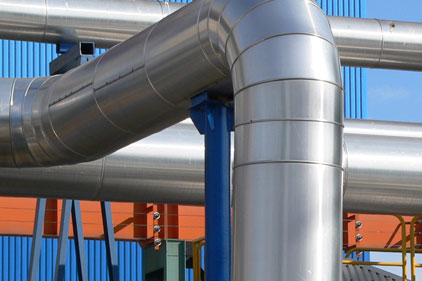The manufacturers partially donated equipment that contributed to the facility’s net-zero energy goal.
As the centerpiece of a $23.5 million expansion project at the 119-year-old nonprofit conservatory, the 24,350-square-foot center will look to meet or exceed the world’s three highest certifications for sustainable structures and landscapes, including the Leadership in Energy and Environmental Design program.
Two Pittsburgh firms, the Design Alliance Architects and CJL Engineering, spearheaded the facility’s energy strategy. A net-zero building is typically defined as one that uses no more energy than it produces.
The design team incorporated energy recovery, geothermal, natural ventilation, solar photovoltaic, vertical axis wind turbine and other technologies, all resulting in minimal input from municipal water and power utilities. Excess on-site electric and water production will be used to supplement neighboring buildings on the 13-acre site.
The heart of the building’s HVAC is the Tricoil energy-recovery system by Sensible Equipment and installed by mechanical contractor SSM Industries of Pittsburgh. The 12,000-cubic-feet-per-minute Tricoil supplies both enthalpy wheel dehumidification and mechanical dehumidification via a patented recuperative loop that pre-cools and re-heats outside air. The system, which is supplemented by the building’s natural ventilation and under-floor ductwork, also provides air conditioning and heating with help from energy recovery. Its water-source heat pump is supplied by a 14-well vertical geothermal field installed by Western Pennsylvania Geothermal Heating & Cooling. A building automation system by Automatic Logic monitors and controls all building environmental conditions.
“The design uses sustainable equipment and concepts readily-available today, but what’s unique is the unprecedented combination of all this equipment into a net-zero energy application,” said Alan Traugott, principal with CJL Engineering.
Kenneth L. Eiermann with Sensible Equipment and the inventor of the Tricoil, said the net-energy goal seemed an impossible task at the beginning.
“In preliminary design meetings we (HVAC manufacturers) thought net-zero energy might be insurmountable especially in terms of air conditioning, but once everybody started conceiving of the sustainable possibilities within their own custom manufacturing capabilities, it was an exciting and viable challenge,” he said.
The other green HVAC equipment donated to the project was electrical components by Chess Electric Co.; rooftop curbs by Conn-Fab; filters and filter glide pack by Filtech Inc.; exterior panels, doors and view ports by ITM4; compressors by Liqua-Chill; coils by Luvata/Heatcraft; and fans by Pennbarry Inc.
Much of the HVAC system was the incorporation of the most energy-efficient, sustainable product options the suppliers had to offer, designers said. For example, the 2-inch-thick doors and panels of the Tricoil unit have a solar reflective paint and maintain a positive pressure, near-zero air leakage due to special tight-fitting gaskets and door latches, which came from the ITM4’s Apex product line. Like the project’s other construction materials, the HVAC enclosure’s insulation, gaskets and other materials use no chlorofluorocarbons, volatile organic compounds and other environmental contaminants.
“The HVAC manufacturers played an important role in our overall net-zero energy goal,” said Richard V. Piacentini, the conservatory’s executive director. “As a result, the Center for Sustainable Landscapes is an incredible structure that is one of the greenest buildings on Earth, thanks in no small part, to the state-of-the-art technologies we employed on site.”


Report Abusive Comment